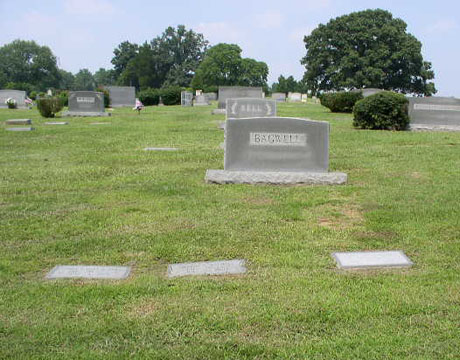|
Ten Tips for Taking a Photographic Cemetery Survey
by Mary Harrell-Sesniak
Previously published in RootsWeb Review: 04 April 2007, Vol. 10, No. 14.
- Set a reasonable goal and start with a small cemetery or a small
section within a larger one. Don't set goals you cannot achieve. Many
cemeteries seem small but actually contain thousands of burials.
- Do background research. Look for official records and previous
surveys. Use them to determine if there are persons buried without
stone markers, or if markers are missing. Note changes and
corrections, and when you're done, make your own original record.
- Introduce yourself to the management staff and explain your
mission. If the cemetery is private, you will need permission. And for
all cemeteries, know the rules. Laws can vary by state, county, and
country. Carry credentials such as a letter of introduction.
- Before starting, take a small sampling in a well-defined area and
create a system. Work in a logical order and decide if it is easier to
transcribe at the cemetery, or to read images on the computer.
- Pick a reasonable schedule. Weekends are busy days at cemeteries
and you will need to be respectful of ongoing funerals. Avoid the heat
of the day and days after rain when the ground may be soft and muddy.
- Be flexible. Avoid areas where the grass needs mowing, and if
possible learn the maintenance schedule. Your pictures will look
better if the lawn looks trimmed.
- Wear proper attire. Take along a hat, gloves, windbreaker, and
comfortable walking shoes. You may prefer long pants to avoid sunburn
and bugs or be more comfortable in shorts.
- Don't forget the digital camera and extra batteries. Erase or
format your memory card so pictures will appear in order. It is best
to include only one section on a card, and if working in a group, a
laptop will be useful for downloading at the site.
- Make a supply list. Sunscreen, bug spray, paper towels, a notebook,
and a clipboard with an attached pencil are useful. Do not disturb
tombstones, but if possible take along a small broom to brush away
debris.
- Not everyone in your team will be an accomplished photographer.
Some will take crooked pictures or cut off parts of stones.
Explain techniques to get better results. These are some of my
favorites:
- Take the entire stone with the surrounding area and if
difficult to read, also take a close-up.
- If a family plot is defined, take a group shot as well. And
if two stones are of similar style, but have different names,
treat them as a family.
- Look at the back of the stone. You may find additional
information there.
- Use your camera to note landmarks, sections, and rows.
- Choose the proper resolution. Low settings allow for more
photographs, but higher settings are preferred for
hard-to-read stones.
- Use a photo resolution that yields photos of at least 1800 pixels on the longest side. Some cameras call this a medium resolution.
Avoid low resolutions such as 640 x 480 pixels as these will make it difficult to read the inscriptions.
- Avoid taking photos with the sun directly behind you. The
shadow will be unattractive and you may recognize your own
image in the photo. However, if this is the only option,
take the photo and return at a later time for retakes.
- Plan your camera position. Stones that are flat to the ground
need to be taken from above. However, stones that are
positioned vertically will produce better results if taken
from a low position. Put your camera at waist level or kneel
down.
- Keep your camera in the same horizontal (or vertical) position for each shot. Rotating photos in software can be time-consuming.
- Make backups before processing your photos and give copies to
a team member. If you cannot read a resized one, you will
need to return to your original, and if you lose your photos,
all of your time will be wasted.
|



